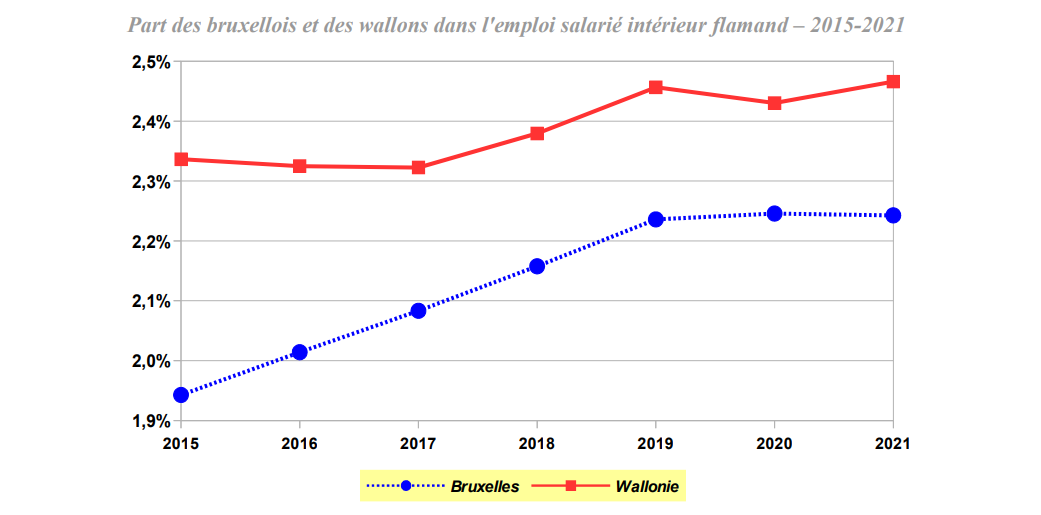The mobility of labour from poorer to richer regions of Belgium has become an increasing barrier to employment growth. A report published by former Ecolo leader and economist Philippe Defeyt shows that just 5% of internal employment in Flanders is filled by residents of Wallonia or Brussels.
The economist concludes that it will be considerably harder for the Federal Government to achieve a national employment rate of 80% without increasing the flow of workers from Brussels and Wallonia to Flanders.

Credit: Institute for Sustainable Development
Flanders is in need of workers from Wallonia and Brussels to fill a growing number of job vacancies. The Flemish government is even attempting to make lower-paying jobs more attractive by offering a “work bonus” to those earning less than €2,400 gross per month.
Until now, factors such as language barriers and socio-economic conditions have been barriers to attracting employees from other regions to Flanders. Migrant labour is often preferred for filling jobs in with residents of other regions.
Employment disparity
Employment in Flanders (75%) is considerably higher than in other regions and pulls up the national average (70%). In Wallonia, the employment rate is just 65.2%, and only 62.2% in Brussels.
Yet despite its relatively high current employment rate, Belgian companies created a record 205,877 job vacancies in the first quarter of 2022– up significantly from the same period last year. The vast majority of these jobs were created in Flanders (67.95%), indicating a need for improved employee flow into the region.
Since 2015, the flow of employees from the capital to Flanders has risen by 25% with some 54,000 people finding work in Flanders. A further 59,400 Walloons moved to Flanders for work – up 14%. The movement of workers towards Flanders has rebounded after the Covid-19 pandemic but still represents a minority of internal labour flow.
The majority of employment mobility is directed towards Brussels: 228,100 Flemish and 131,500 Walloons found work in Brussels last year.

